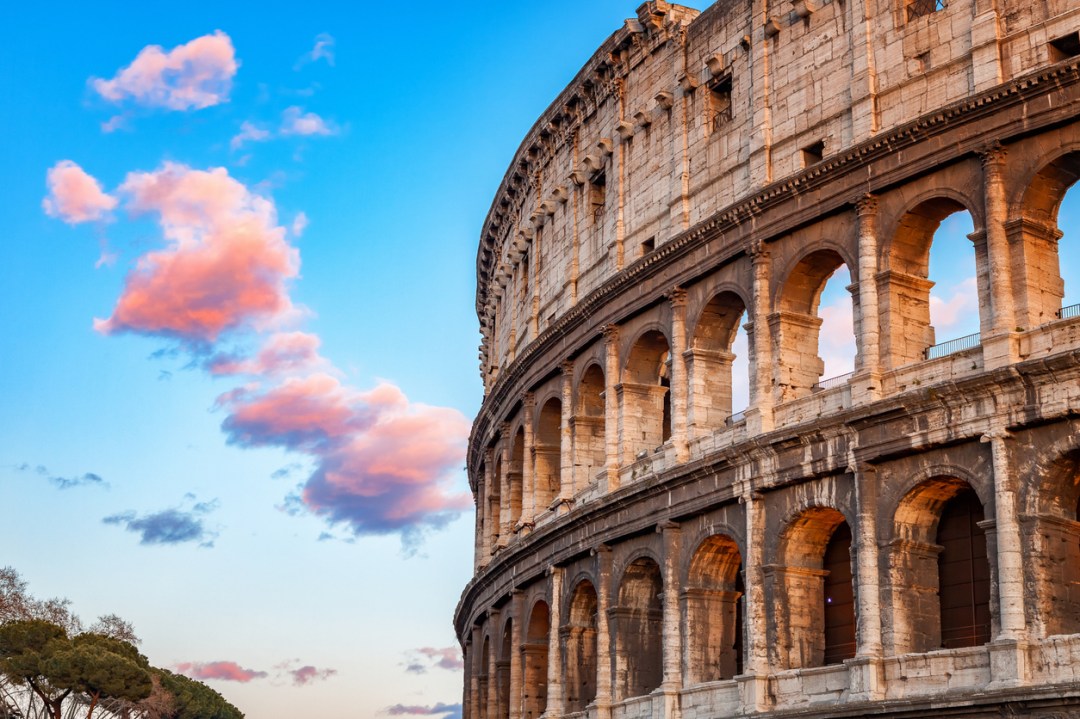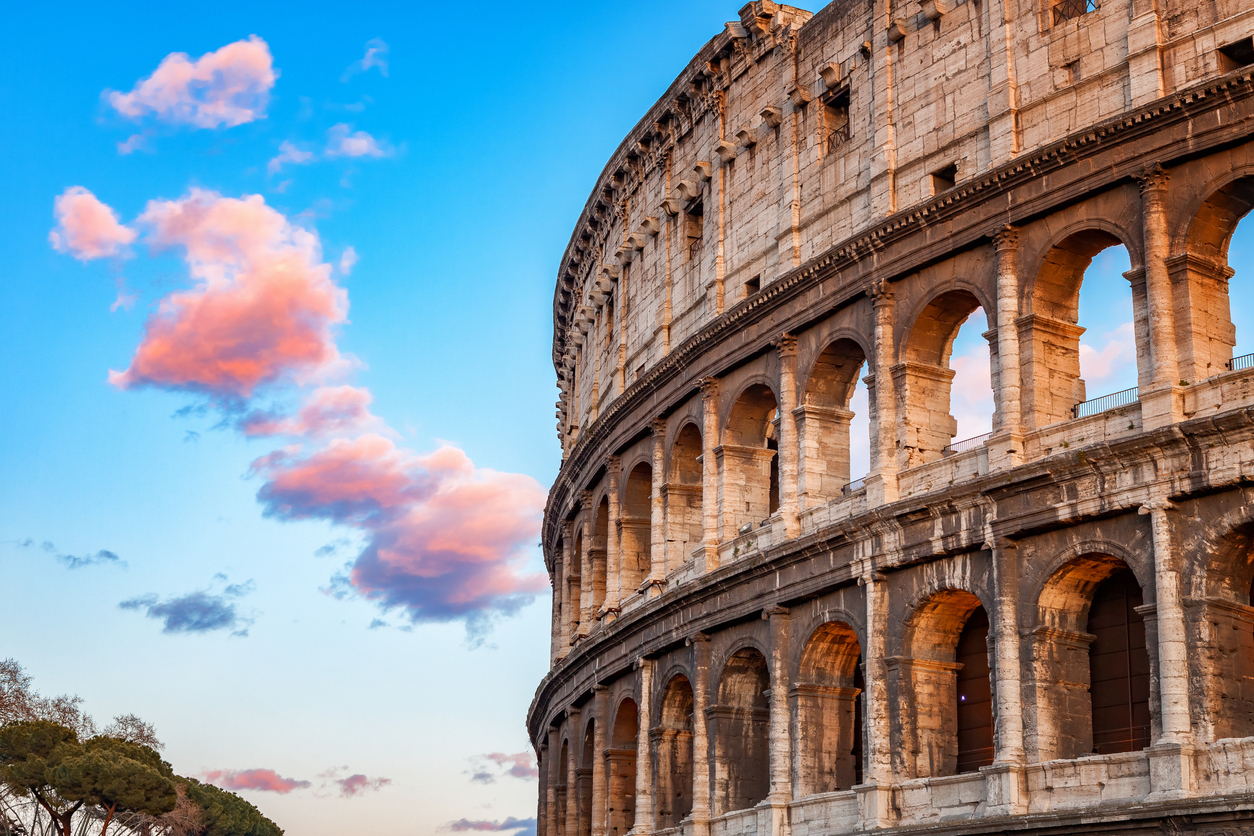Rome is Europe’s most beautiful city, but there’s a downside: the most famous attractions are nearly always overwhelmed with crowds. The line for the Colosseum bakes under the unbearable Roman sun; the Sistine Chapel queue snakes through the Vatican; the Trevi fountain is spoiled by selfie seekers. Fortunately, though, there is a way of avoiding the mob – and seeing a side of the Eternal City that captivated generations of travellers before the modern tourist industry took hold.
The best advice for avoiding the throngs is, when in Rome, do as the Romans don’t – and wake up early
The best advice for avoiding the throngs is, when in Rome, do as the Romans don’t – and wake up early. If you can avoid the charms of the late-night bars of Trastevere, then head to bed and rise before the sun starts warming up the streets. At 6 a.m., the streets of Rome are mostly empty. A local guide to help you navigate the city is essential, so if you’re in Rome and want to burn off some pizza and pasta book on a S.P.Q.Run sight-running tour. Dario, my guide, grew up in the city, and knows the streets as well as anyone. In 10km, we see the Colosseum – which is best seen from outside, rather than inside – without the crowds, have the Circus Maximus to ourselves and glimpse through the famous Aventine keyhole that frames the dome of St Peter’s Basilica, without having to queue for the privilege. He also points out the best coffee shops, pizzerias and shows a Roman trick for drinking from the ubiquitous water fountains that dot the streets. All before 7.30 a.m. when the sun’s heat takes hold.
Of course, not everyone wants to get up early. So if you don’t but still want to see the best sights, you’ll need to plan in advance. The Vatican is one of the most crowded of the city’s attractions, but there’s a secret way of avoiding the long line and seeing a side of St Peter’s that few get to see. A ticket to the necropolis below the Basilica is like gold dust and sell out weeks in advance. But lucky holders get to descend into tunnels underneath the church, and walk the streets of a first century pagan burial ground. You’ll also get to glimpse the grave upon which the church was founded: that of St Peter, all while hearing the ethereal music from the church above echoing through the ceiling. The tour spits you out in the Basilica itself – meaning you get to avoid the queue outside. Book tickets through the Vatican’s excavations office here.

Rome is a city packed with so many sights that it’s easy to focus on the most famous attractions. It’s true that no visit is complete without seeing the Pantheon (book tickets in advance to avoid the long line, and go early); and the Forum (best seen at the end of the day when the tour groups have gone home and the sun is easing). But the city boasts some remarkable sights that rarely get mentioned in the top ten lists, yet would, in any other city, be counted as ‘must sees’.
San Luigi dei Francesi, a short walk away from Piazza Navona, boasts three Caravaggio paintings and is free to enter. The Galleria Doria Pamphilj, just off Via del Corso, the main shopping strip in Rome, is also usually deserted and yet houses one of the finest private art collections in the world. Even at the most crowded sights, such as the Spanish Steps, tranquillity isn’t far away. The Keats-Shelley house goes unnoticed by most visitors but offers a fascinating glimpse into the dying days of the young English poet. Away from the hustle and bustle, you can hear the gentle water of Bernini’s fountain outside the very room where Keats coughed his lungs out.
Keats’ grave in the non-protestant cemetery – where services were always held at night and no messages of salvation were allowed to be displayed – is also worth a visit. Oscar Wilde said it was ‘the holiest place in Rome’ and the tranquillity of the graveyard was said to have reassured Keats in his last days about where his body would be buried. Today, that peace endures.
If you haven’t had your fill of Roman ruins, there are plenty of attractions outside the city centre which aren’t mobbed with visitors. The colossal ruins of the Baths of Caracalla, where slaves toiled beneath the ground to work the spas where the Roman elite relaxed, give a sense of the power of the Roman empire; a 30-minute train ride out of Rome to Ostia Antica allows you to visit the port where lions and other wild animals made their final journey to the Colosseum. The scale of the port is on a par with Pompeii but attracts just a fraction of the number of visitors.
After a long day of sightseeing, there is no better place to stay than the Hotel Hassler. Rome’s most iconic hotel perches at the top of the Spanish Steps and boasts unenviable views from its windows. When the sun goes down, you can have a drink on the seventh-floor terrace which offers the finest panorama of the city without any of the crowds. David Beckham, Tom Cruise and Princess Diana have stayed at this hotel and you can see why: it’s sophisticated and subtle, the rooms are luxurious and you won’t need to lift a finger during your stay. If you want to dodge the crowds, the Hassler is also the place to be: few tourists venture to the top of the Spanish Steps, making it something of an oasis in the city. And when you wake up early for a day of sightseeing, you’re already right in the heart of the Eternal City.
Rooms at the Hotel Hassler start from €536 (£475). To book, visit the Hassler’s website







Comments